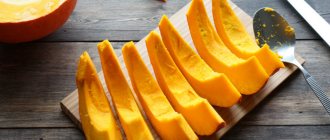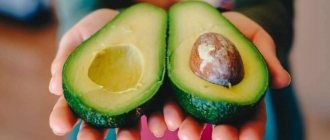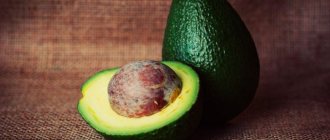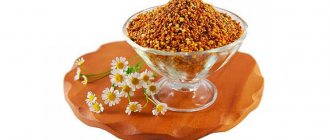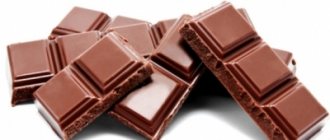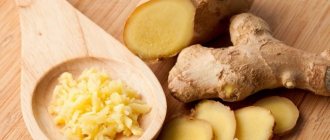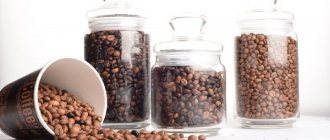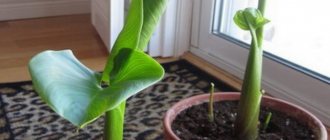Many summer residents grow pumpkins on their plots and harvest them at the end of summer. One part of the fruit can be consumed immediately, and the other can be sent for storage. In order to be able to enjoy the vitamin-rich fruits even in the winter season, it is extremely important to comply with storage conditions, regardless of where the pumpkin is located - in the cellar or in the apartment. What kind of conditions these are, we’ll figure it out further.
Which varieties are suitable for storage?
Not all varieties of pumpkin can be stored in winter, so this factor must be taken into account when purchasing seeds. Mid-season and late-ripening varieties are best stored, especially if you plan to keep them in a cellar or basement. Varieties that are distinguished by increased shelf life are:
- Kherson . Mid-late, drought-resistant and heat-loving variety. This pumpkin has a thick gray skin and a slightly flattened shape. There are small spots and stripes on the skin. The pulp is orange, fleshy and sweet.
- Slavuta . It belongs to late varieties, so harvesting is carried out in the middle or end of September, depending on the weather. This variety of pumpkin has a grayish-green skin, sweet flesh and strong immunity to disease.
- Ioannina . A mid-season variety that has an oval shape, an orange peel with small green spots and a pleasant sweet taste. Does not suffer from powdery mildew.
- Hylea . A mid-season nutmeg variety that has a thin skin, yellowish-orange pulp with a pleasant taste.
- Polyanin . Mid-season table variety. The fruits ripen in a cylindrical shape, have a brown peel and sweet pulp, which is used in baby food.
- Vitamin . This is a late-ripening variety of nutmeg pumpkin with a ripening period of 130 days, which is recommended to be planted in warm summer conditions. The fruits are oval in shape, have a yellow rind with green stripes and sweet orange flesh. They can weigh from 4 to 7 kg.
- Winter sweet . This is a mid-season variety with a gray crust covered with spots. The shape of the fruit is round and slightly flattened. The pulp is orange, sweet in taste and smells pleasant. Has immunity against various fungal diseases. Well kept. Fruit weight is from 6 to 12 kg.
- Pearl . Mid-late variety of nutmeg pumpkin. The shape resembles a pear; the pulp is consumed even fresh. The fruits grow weighing up to 5 kg.
- Interception . A late-ripening variety that bears small fruits weighing up to 3 kg. Their shape can be elongated or shortened. Great for baking and juicing.
- Zhdanna . The variety is considered mid-season. The fruit ripens in a large size, has bright orange flesh and a sweet taste. The fruits can weigh up to 8 kg. It has strong immunity to diseases and long shelf life.
- Arabatskaya. Butternut squash has a growing season of 118-127 days. The fruits are cylindrical in shape and resemble zucchini in external characteristics. They weigh from 9 to 20 kg. The rind is bright yellow and the flesh is orange and sweet. The variety is well stored in the cellar.
- Gymnosperm . A mid-early pumpkin variety that grows from 5 to 15 kg. It has a hard rind and yellow flesh. Keeps well under optimal conditions.
Experienced gardeners recommend choosing varieties of nutmeg pumpkin for winter storage, since under optimal conditions they have a high shelf life - about 6 months. Popular varieties include varieties such as Vitaminnaya, Zhemchuzhina, Intercept, Vita and Butternut.
Optimal storage conditions
Regardless of the storage location, experienced gardeners identify universal conditions that allow you to keep pumpkins fresh for as long as possible. They look like this:
- lack of light (it is necessary to prevent direct sunlight from falling on the fruit);
- constant access to fresh air (the room must have good ventilation);
- comfortable temperature – +3…15°C (at low temperature conditions the fruits will freeze and their shelf life will be reduced by 3-4 months);
- moderate air humidity levels - no more than 75-80% (with higher humidity, cobwebs, mold, spots and other signs of damage will appear on the fruit peel, so they will have to be removed and the storage location changed).
The best place for storage is considered to be the cellar, but with the right approach, the fruits can also be kept in the pantry, refrigerator, insulated balcony or garage.
Preparation for storage
First of all, it lies in the correct harvesting. It is recommended to harvest pumpkin in early September, before frost sets in. By this time it should become hard and slightly dry. Harvesting should be done on a dry day, cutting off the pumpkin along with the stem.
It is recommended to clean the collected fruits from dirt with a dry towel and keep them in the sun for several days so that the stalk dries thoroughly. This is an important point, since if the integrity of the stalk is damaged, the vegetable will quickly deteriorate.
The dried fruits then need to be sorted in order to select the most successful specimens for storage. They must have stalks, fully ripe, healthy and intact. If the pumpkin has damage, dark spots or mold, then it is not suitable for storage, even if unsuitable areas are cut off, because in this case the risk of infection of the entire fruit is extremely high.
The pumpkin should be stored for storage with a natural protective layer, as it repels pathogens. In this regard, the collected fruits cannot be washed or wiped with a damp cloth.
Answers to popular questions
Is it necessary to wrap the pumpkin in something when storing it as a whole?
No, the thick peel protects it from external influences. Additional packaging of the fruit with cellophane, parchment or cling film can only lead to the formation of condensation, which will soon lead to rotting of the vegetable.
Is it possible to store pumpkin without stems?
It is possible, but it will not be stored for long - just like cut fruits.
Does it need to be washed before long-term storage?
No, washing off the protective layer from the peel significantly reduces the shelf life of the vegetable. You can remove excess dirt with gloves or a dry cloth.
Can different varieties be stored together?
It is undesirable because they have different shelf life and storage conditions. It is better to package them in different places.
Where and how to store pumpkin?
In the cellar
The most reliable way to preserve a pumpkin is to place it in a cellar, since this place usually maintains a constant air temperature of about 5°C and moderate air humidity of 75%. Of course, before storing vegetables, the cellar will need to be prepared first:
- completely get rid of last year’s harvest (you can only leave closed jars of pickled cucumbers and tomatoes);
- ventilate the room well;
- wipe down the shelves;
- dry the floor;
- carry out disinfection from parasites and mold (for this, it is recommended to smear the walls and shelves with lime before laying vegetables).
After preparing the room, you can directly plant the pumpkin in compliance with the following rules:
- put the fruits on racks, since the temperature on them is higher than on the floor;
- place dry paper or straw under the fruits;
- do not place fruits close to the walls;
- be sure to point the fruit stalks upward;
- maintain about 10 cm between the fruits, that is, do not lay them close to each other;
- Place straw between the pumpkins.
After planting, it is necessary to regularly check the condition of the fruits. If it is discovered that some fruit has spoiled, it must be immediately removed from the cellar.
If condensation appears on the pumpkin, it should be thoroughly wiped with a dry cloth, and then the cellar should be ventilated and checked how the ventilation system works. Condensation usually appears at high humidity. If the water droplets are not dried, dark spots will form on the pumpkin, which will turn into rot. For preventive purposes, you can put quicklime in the cellar, since it perfectly absorbs excess moisture.
In the apartment
It is much more difficult to store a pumpkin in an apartment in the winter, because this will require finding a lot of space, creating temperature conditions and darkness. The task will be much easier if the apartment has a storage room. In this case, the pumpkin can be stored according to the following rules:
- For better preservation, place the fruits in containers, such as a cardboard box, wooden box, box or plastic container. For these purposes, you cannot use plastic or cellophane bags, since condensation will accumulate in them, which will lead to the formation of a favorable environment for the development of harmful fungi.
- Place parchment paper or a small layer of dry straw under the fruits, as well as between them. In the future, the litter should be changed if it becomes damp.
- Place containers of vegetables on pantry shelves.
- Regularly ventilate the room and maintain an optimal temperature (up to 10-15°C).
- Inspect pumpkins from time to time in order to promptly remove fruits that begin to deteriorate.
Even if the pumpkin is stored indoors, it cannot be washed, since the natural coating on the rind should be preserved, which is a kind of protection against spoilage of the vegetable.
If the apartment does not have a storage room, then you can allocate another space for storing pumpkins:
- Cool place near the windowsill . You need to put cardboard or a thick layer of paper under the fruits and between them, and they should be installed with the stalks facing up. During the daytime, the sun's rays will fall on the pumpkin, which will lead to its rapid spoilage. To prevent this, the vegetable should be covered with a breathable material, for example, linen or cotton fabric.
- Glazed balcony or loggia . Cover the uninsulated floor with an old blanket, on which place the fruits with the stalks up and at a distance of 10 cm from each other. To protect from the sun, they need to be covered with a cloth. When the temperature drops, it is better to wrap the fruits using a cotton blanket. You can also make shelves or racks on the balcony, which must be painted and whitened with lime to destroy fungi. Afterwards you can store the pumpkin on them.
- Under the bed in a cool room . As a last resort, you can keep the pumpkin under the bed. It cannot be placed on linoleum or cement, so it is advisable to place plywood under it. The fruits should still not touch each other. As with other storage methods, they need to be laid with the stalks facing up.
In a refrigerator
If the pumpkin has grown large, it will have to be divided into 2-3 parts, but in this case the shelf life at room temperature will be significantly reduced - to 3-4 days. In addition, this will require drying the cut with a napkin and wrapping the fruit in linen to protect it from sunlight.
Cut pumpkin will keep in the refrigerator for about 7 days if cut into pieces, which are carefully placed in clean plastic bags. To increase the storage time to up to a month, you can wrap the pumpkin in foil, but in this case the wrapper will have to be changed regularly, and the pumpkin pieces will have to be greased with vegetable oil so that they do not dry out.
Cut pumpkin can be stored for the longest time in the freezer, but to prevent it from spoiling, it must first be frozen. Of course, in this case, much will depend on the quality of freezing. It is done as follows:
- Wash the fruits, remove the peel and seeds, and then cut into small pieces.
- Place the chopped pumpkin in the refrigerator for 8 hours or overnight.
- Keep the cooled pumpkin for about 1.5 hours at room temperature.
- Dry the pumpkin in the oven for about 2 hours at a heating temperature of 50-60°C, and then cool.
- Place the pieces in special containers or freezer bags, removing excess air. To avoid having to defrost the entire pumpkin in the future, it should be placed in containers for freezing in small portions - 300-500 g each.
- Place the preparations in the freezer.
In this form, the pumpkin can be stored until the next season.
To enjoy the pleasant taste of a vitamin vegetable, it must be defrosted correctly. So that the pumpkin loses less juice, it should be taken out of the freezer and placed on a shelf in the refrigerator. It will take about 10 hours to completely defrost. If you need to defrost the pumpkin faster, you can simply put it in the sink and eat it after 5 hours, but in this case it will turn out drier.
To defrost the pumpkin as quickly as possible, you can put it in the microwave by turning on the “Defrost” mode. If you don’t have such a device, you can simply throw the bag of pumpkin into a bowl of hot water. However, it should be noted that such methods negatively affect the structure of the pulp.
Beneficial features
- Purgation. Thanks to the pectin it contains, which is an excellent adsorbent, pumpkin perfectly removes various wastes and toxins from the body.
- Liver restoration. The vegetable dilutes bile and restores the structure of the liver.
- Purifies the blood and strengthens the walls of blood vessels, lowering blood pressure. Pumpkin perfectly removes cholesterol, and also restores and strengthens the walls of blood vessels, increases their permeability and elasticity, and destroys vascular plaques.
- Improving heart function and relieving edema. Due to its high potassium content, it perfectly removes excess fluid from the body, facilitating and improving kidney function.
- Boosting immunity. Eating the product helps increase the body's resistance to colds, improves regenerative properties, and is an excellent anti-inflammatory agent.
- Tonic effect and normalization of the nervous system. Regular consumption of vegetables reduces anxiety and restlessness, improves sleep quality.
Should be excluded from the diet:
- with individual intolerance;
- at low blood pressure;
- for gastritis with low acidity;
- for stomach and duodenal ulcers (especially during exacerbation);
- with cholelithiasis;
- with diabetes mellitus.
What to eat if you have diabetes
For men, the beneficial effect of pumpkin on the reproductive system is especially important: the vegetable helps prevent prostatitis, increases potency, promotes testosterone production and normalizes erectile function.
For women, pumpkin is useful primarily due to its effect on free radicals in the body. The vegetable limits their action, slowing down the aging process.
It is indispensable during pregnancy, it gently relieves swelling, perfectly cleanses the body, and helps prevent vitamin deficiency. Pumpkin juice is successfully used for weight loss, because it has a good fat-burning effect.
For children, the vegetable is an indispensable source of vitamins and microelements that neutralize inflammatory processes in the child’s body and have a beneficial effect on the immune system and nervous system. The fiber contained in the vegetable regulates digestive processes and improves the absorption of nutrients.
Pumpkin oil: benefits and harms, how to take
Effects on liver function
Pumpkin gently cleanses the liver, significantly improving its function.
Pectin, contained in large quantities in the fruit, promotes the rapid removal of harmful substances, toxins and excess cholesterol.
Microelements, which are present in large quantities in the vegetable, quickly restore hepatocytes - liver cells, normalize the process of its functioning.
Pumpkin cleanses the bile ducts, dilutes bile, promotes its better conductivity and the removal of excess quantities from the body. All this is an excellent prevention of cholecystitis and other liver diseases.
Effects on the cardiovascular system
Eating pumpkin reduces the risk of heart attack and stroke, and serves as a prevention of atherosclerosis and thrombosis. Vitamins and microelements found in vegetables help strengthen the heart muscle and lower blood pressure, prevent coronary artery disease, normalize blood clotting, and reduce the likelihood of anemia.
Useful properties of seeds
Pumpkin seeds are extremely beneficial. They are rich in flavor and high in calories.
- the composition of the seeds includes a large amount of fatty acids and easily digestible carbohydrates, which increase resistance to colds and viral diseases.
- they are extremely rich in vitamin E and manganese. These microelements have a remarkable antioxidant effect on the body.
- Magnesium and zinc, contained in large quantities in the seeds, improve the condition of the heart, prostate gland, and also protect against certain types of cancer.
- The phosphorus contained in the seeds is extremely useful for maintaining visual acuity. it also protects the retina from damage from sunlight.
- a large amount of fatty acids reduces the likelihood of heart disease and lowers cholesterol.
- complexes of vitamins and microelements help strengthen bones.
- Separately, we can note the anthelmintic properties of pumpkin seeds, because they perfectly cleanse the body of parasites without side effects.
The seeds of this crop contain a huge amount of useful microelements and vitamin complexes, which are widely used in traditional medicine recipes.
How to keep pears fresh for the winter at home
In what form should it be stored?
Dried
In order to simplify the procedure for storing pumpkin, it can be dried. In this case, it will take up less space and will not deteriorate. For drying, you can use a conventional oven or a special electric dryer. It is carried out in several stages:
- Wash the pumpkin peel, then separate the pulp and remove the seeds.
- Cut the pumpkin into small pieces, about 1 cm thick.
- Line a baking sheet with parchment paper, on which spread the pumpkin pieces in a thin layer.
- Preheat the oven to 60°C and dry the pumpkin for 5 hours. Turn off the oven periodically. The temperature should not rise to 80°C. It is not necessary to carry out such manipulations when using an electric oven, which is capable of maintaining a constant temperature.
- Remove the well-dried pieces and leave to cool.
Dried pumpkin must be stored in containers without access to air.
In brine
This method will allow you to preserve the pumpkin until spring, so you can enjoy your favorite vegetable all winter. The pickled pumpkin is prepared as follows:
- Wash the peel, and then cut the fruit into slices and remove the seeds.
- Place the pieces into sterilized jars.
- Prepare the brine - dissolve 3 tbsp in 1.5 liters of chilled boiled water. l. salt.
- Pour the brine into the jars with pumpkin, up to the very edges of the container, and cover with a plastic lid.
It is recommended to store jars of pumpkin in the cellar or refrigerator.
Pickled
Pickled pumpkin resembles canned pineapple. This method of preparation will allow you to enjoy your favorite vegetable for a whole year or even more. It can be served as a side dish for meat or as an independent dish.
For marinating you will need the following ingredients:
- pumpkin – 1 pc.;
- water – 1.5 l;
- citric acid – 1 tsp. with a slide;
- sugar – 150 g;
- salt – 1 tbsp. l.;
- Schisandra – 7 leaves;
- radiola pink – 7 g.
To prepare the pickled product, you will also need a pre-sterilized glass jar.
Pumpkin is pickled as follows:
- Wash a medium-sized pumpkin, separate the pulp and remove the seeds. Cut the pulp into small cubes.
- Boil the pumpkin for about 5 minutes, and then throw the boiled pieces into a sterilized jar.
- Prepare the filling by boiling water with the addition of sugar, salt, citric acid, lemongrass leaves and rhodiola rosea powder.
- Pour the filling into the jar with the pumpkin.
- Roll up the jar with a metal lid and turn it over for a while.
Store pickled pumpkin in a cool place, preferably in a cellar.
How long can pumpkin be stored?
You can store pumpkin for different times, since it all depends on the conditions created and how it is processed:
- fresh pumpkin, cut into pieces, can be stored in the refrigerator for 7 to 30 days;
- in an apartment, the shelf life is about 4-6 months, but there are pumpkin varieties and individual specimens that can be stored for up to 12 months;
- if the vegetable is laid out on shelves in the cellar, then it can be kept in this form until spring;
- Frozen and canned pumpkin can be stored for 1 year;
- Dried pumpkin in a well-sealed container can be stored for 1.5 to 2 years.
At what temperature should you store pumpkin so that it doesn’t disappear?
Storage modes vary depending on the chosen storage location and the method of further use of the product. The optimal temperature for storing pumpkin crops is considered to be +3…+15°. But maintaining such a range at home is difficult.
The question is very relevant in winter, at what temperature to store pumpkin at home with maximum shelf life. There are two possible solutions:
- Whole vegetable - in the basement, on the balcony at a temperature of about 0°;
- Cut - frozen at -3° and below.
As a last resort, they are stored in an apartment or pantry at +22...+25°, but the shelf life is reduced.
It is recommended to keep any peeled vegetables and fruits in the cold. Not only vegetables, but also pomegranate seeds are stored in the freezer. You can freeze both raw and heat-treated pumpkin. The puree, shavings or cubes can be used to make pies and soups. Fruit drinks, compotes and sauces are prepared from frozen fruits and berries.
Storage errors
Many gardeners who grow pumpkins themselves make a number of mistakes that shorten the shelf life. These include:
- picking unripe vegetables that quickly become moldy and begin to rot;
- watering the pumpkin a week before harvesting (being in damp conditions, the fruit begins to quickly deteriorate);
- sending fruits for storage in the cellar without first drying them in the sun and in a dry place;
- storing pumpkins in the cellar on shelves with damp wood or on a cement floor;
- storing pumpkins in the same cellar with apples that emit ethylene.
Reviews
Temperature conditions and darkness are of course necessary, but if the pumpkin is removed at the wrong time, it will still spoil. It is best to harvest at the end of September in dry sunny weather and leave the stalk long - 10 cm or more. Dry thoroughly, then carefully inspect and remove the damaged skin. And then dry it in the sun for a week. The main thing is to choose the right one so that it is whole and not broken.
Nikolay, Voronezh
Yes. And if the fruits are rotten, it’s better not to risk it. they won't keep for long anyway. I immediately either mulch them with a blender, or cut them into cubes and put them in the freezer. Where are the pumpkins that have scratches, you can put bactericidal patches on them, I tried them myself, they are stored normally for a couple of months, they lasted well / But of course I used them first, and the whole ones later.
Olga, Kostroma region
Pumpkin is a very popular unpretentious crop with a pleasant taste. It is popular due to its many cooking methods and is famous for its huge content of vitamins and beneficial microelements. In order to effectively preserve its beneficial properties and enjoy its unique taste all year round, you need to comply with the conditions for collecting, preparing and storing this wonderful product.
Health to you and your loved ones! Natalya Belokopytova.
Video: how to properly store pumpkin?
The following video describes the conditions under which pumpkin should be stored so that it does not become moldy and rotten:
How to preserve a pumpkin so that it lasts until the next harvest? The answer can be found in the video below:
Pumpkin is a healthy dietary product that can be preserved for the winter in both fresh and processed forms. To preserve all the beneficial properties of the product fresh, it is better not to store it for more than 6 months. It should be noted that the optimal period for storing pumpkin is 2-3 months.
0
0
Copy link
Correct collection
To preserve the vegetable until spring, it is important to pay attention to proper harvesting. To do this, you should follow these recommendations:
- Maintain the integrity of the stalk. Moreover, its size should be 4 cm.
- Make sure the pumpkins are dry. This helps to avoid rot and mold. A dry and clean harvest can lie at home all winter.
- When harvesting in rainy weather, dry the fruits in a closed, ventilated room for at least 10 days.
- If the harvest is small, it is advisable to wipe each pumpkin fruit with a clean and dry cloth. When growing crops on an industrial scale, this, of course, will not be possible.
Important! It is necessary to inspect the fruit for damage. It is important to separate suspicious vegetables from healthy ones and process them immediately.
